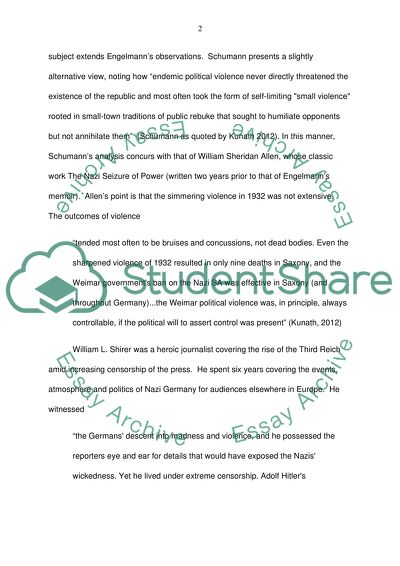Document analysis: political violence in Germany in the lead up to Assignment. Retrieved from https://studentshare.org/history/1492206-document-analysis-political-violence-in-germany-in
Document Analysis: Political Violence in Germany in the Lead up to Assignment. https://studentshare.org/history/1492206-document-analysis-political-violence-in-germany-in.


